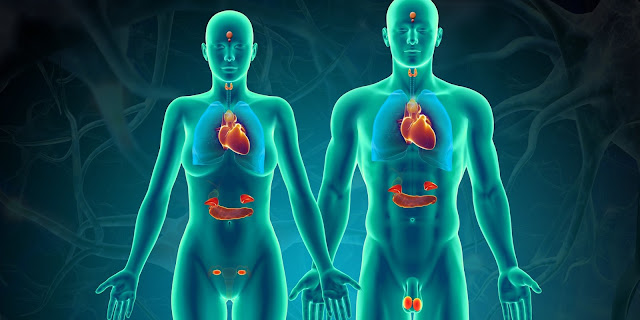Oral Thin Films: A Promising Drug Delivery System
 |
| Oral Thin Films |
Oral
thin films, also known as oral soluble films or oral dissolvable films, are
thin polymeric films manufactured using hydrocolloid polymers that rapidly
disintegrate when placed on the tongue or buccal cavity. When compared to
traditional oral dosage forms like tablets and capsules, oral soluble films
have key advantages like rapid disintegration, easy swallowability without
water, accurate dosing, and versatility in drug loading. These properties make
oral soluble films a promising drug delivery system for a wide range of
therapeutic molecules.
Composition and Manufacturing of Oral
Thin Films
Oral
Thin Films are typically composed of hydrophilic polymers that are film
forming, flexible, and water soluble. Common polymers used include polyvinyl
alcohol, pullulan, hydroxypropyl methylcellulose, sodium alginate, and
carboxymethyl cellulose. Hydrophobic agents are sometimes added to modulate the
mechanical and dissolution properties. Active pharmaceutical ingredients (APIs)
along with polymers, plasticizers, sweetening agents and flavors are dissolved
or dispersed to form a homogenous mixture. This mixture is cast onto a backing
liner using manufacturing techniques like solvent casting/evaporation or
hot-melt extrusion to produce oral soluble films of uniform thickness ranging
from 20-50 μm. Quality testing ensures the films meet standards for physical
properties, drug content and stability.
Advantages of Oral Thin Films Over
Conventional Oral Dosage Forms
The major advantages of oral soluble films include:
1. Rapid disintegration - Oral thin films rapidly dissolve within seconds when
exposed to saliva, leading to instant drug release. This property offers
superior convenience compared to tablets.
2. Easy swallowability - Being thin and flexible, oral soluble films can be
easily placed on the tongue and swallowed without water. This makes them very
convenient for pediatric, geriatric patients and those unable to swallow
tablets.
3. Accurate dosing - Oral soluble films allow for precise drug loading
reproducibly across individual dosage units due to their uniform film geometry,
providing greater dosing accuracy than capsules.
4. Versatility - Oral soluble films can be designed for a variety of APIs
ranging from small molecules to biologics. Both immediate and controlled
release profiles can be achieved by modulating the film composition and
manufacturing process.
5. Patient compliance - The ease of consumption without water makes oral thin
films a more patient-acceptable dosage form compared to tablets. This
translates to better adherence to prescription regimens.
6. Tamper-resistant properties - Oral soluble films can integrate
tamper-resistant technologies to prevent abuse and misuse of drugs. Drug
extraction is also difficult compared to tablets.
Applications of Oral Thin Films in Drug
Delivery
Owing to their numerous benefits, oral soluble films have emerged as an
important drug delivery platform for various therapeutic applications:
Neurology
Oral thin films delivering drugs for acute conditions like migraine
(rizatriptan), seizures (diazepam) and Parkinson's disease (levodopa/carbidopa)
serve as effective alternatives to oral solid dosage forms. They ensure rapid
onset of action essential for neurological therapies.
Pediatrics
Formulations of common pediatric drugs like paracetamol, ibuprofen and
vitamins have been developed as oral soluble films. The ease of administration
makes them ideal for pediatric populations.
Nausea/vomiting
Anti-emetics for chemotherapy-induced nausea like ondansetron are available
as oral soluble films to enable quick onset of action.
Other applications include breath fresheners, nutraceuticals, nicotine
replacement therapies and more. Oral soluble films have the potential to
reformulate existing products for superior efficacy, safety and patient
experience.
Commercialization of Oral Thin Films
Oral soluble films have emerged as a fast-growing segment in the pharmaceutical
market owing to their widespread applications. According to estimates, the
global oral thin film drug delivery market size was valued over $6 billion in
2019 and is expected to grow at a compound annual growth rate (CAGR) exceeding
10% from 2020 to 2027.
Major players offering oral soluble films include IntelGenx, ZIM Laboratories,
Indivior, MonoSol Rx, Sumitomo Dainippon Pharma and Pfizer. Several blockbuster
prescription drugs have also been reformulated as oral soluble films by these
companies. Contract manufacturing organizations specialized in oral soluble
films aid their production on a commercial scale. With continuous technological
improvements and new product launches, oral soluble films are poised to
revolutionize drug delivery in the years to come.
To conclude, oral thin films represent an innovative means of drug delivery,
offering benefits like rapid dissolving, accurate dosing, easy administration
without water and versatility for various molecules. Owing to these advantages,
they have emerged as a fast-growing segment in drug delivery technology with
diverse applications ranging from treatments of gastrointestinal, neurological
and pediatric conditions. With continued innovation, further commercialization
of existing and novel drugs as oral soluble films can positively impact patient
outcomes worldwide.
Get more
insights on Oral
Thin Films
About
Author:
Money
Singh is a seasoned
content writer with over four years of experience in the market research
sector. Her expertise spans various industries, including food and beverages, biotechnology,
chemical and materials, defense and aerospace, consumer goods, etc.



Comments
Post a Comment